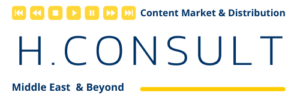If you live in the MENA region, you would know by now that Ramadan is the one-month out of the whole year during which consumption of TV entertainment almost doubles (This year a whopping 93% increase was recorded in the UAE*). More than 50% of yearly acquisition budgets get spent on Ramadan grids, as broadcasters and platforms scramble to gain a competitive advantage in attempt to grab what’s left of the dwindling TV ad spend in the region.
Before I get into new and exciting findings from this year, I’m going to assume that you’re already familiar with the Ramadan Phenomenon in MENA — The inevitable yearly content struggle, the diminishing ad spend, fuelled by piracy and an audience to whom paying for content is a foreign concept. This year is different though. We’re witnessing something that has never happened before: Consumers in MENA are finally being force-taught the concept of paying for entertainment content.
The reason I’m always focusing on Ramadan, is that it provides a perfect catalyst for viewership habits and trends that serves for the entire year, condensed into just 30 days.
This can be quite useful if you’re trying to make predictions like “is that new production project really worth the investment? “How did projects within the same genre perform over the past years?” or “ what programs worked well with my competitors?” “Who are the biggest spenders on Ramadan content?” All you need to do is just dig deeper into what constitutes that 93% increase in viewership minutes recorded, derive your opportunities and threats — and you’re all set until next year. https://13cd4b9d5b24f894382b9a3034581e6e.safeframe.googlesyndication.com/safeframe/1-0-37/html/container.html
A good example would be looking at the Contribution Index of a specific genre or title. It is basically a simple study of supply and demand for content by looking at audience’s time spent watching it vs a channel’s airtime allocated to it. A programme that scores high on the index indicates that viewers spent a higher proportion of their time to the channel watching a specific programme or genre than the proportion of airtime allocated by the channel to airing that programme or genre.
Romance Dramas for example was a genre that scored the highest on the contribution index in 2019. A title like “Enti Meen” took up only 0.2% of channels’ airtime, but yielded viewership minutes of 1.7%, which landed it an exceptional Contribution Index of almost 900.
Despite its perceived popularity, “Kalabsh 3” this year only managed a contribution index of 262 – still delivering over 2.5 times average Ramadan audience but arguably over supplied to consumers in terms of TV airtime.
So if you’re an OTT platform looking to acquire some titles for your library, or a channel looking for some good re-runs, here’s a hint of where to start looking. But don’t forget to check first that it hasn’t been “burned” on YouTube!
YouTube
There’s no doubt that things have changed. For a long time, up until last year, broadcasters in MENA were using YouTube as their catch-up service which was not ideal, but convenient.
They’d save up on platform development and marketing costs, and they’d also get a bit of additional global ad revenues. The YouTube formula has become so powerful that in the absence of a unified audience measurement system in the region, YouTube numbers were used as a basis for determining ad spend on corresponding linear channels.
TV channels were competing and were boasting about winning YouTube Gold Buttons on social media like they’ve won the world cup. The interesting thing is that they were airing the same dramas acquired from the same producers — “Adel Imam on my YouTube channel got more likes than Adel Imam on your YouTube channel”.
Distributors / producers remained blissfully unaware of their content’s monetary potential until wars on broadcast/ VOD/ catch up rights started emerging and accusations of “burning content on YouTube” became a thing.
It took a good five years or so for rights holders to realise that their assets can retain their value for a longer time (which also makes them easier to sell internationally) and can yield additional profit from selling digital rights separately but they did get there in the end.
Over the past three years, there was an average increase of 50% in the number of Ramadan titles acquired by OTT platforms. This Ramadan, for the first time ever, the number of Ramadan titles available on YouTube channels plunged by 92%.
Netflix and WatchIt
Part of that plunge is also caused by a couple of first-time-ever OTT trends that we’ve witnessed this Ramadan season: Netflix and new OTT launches like WatchIt.
Someone persuaded Netflix that if they want to properly penetrate the MENA market, there is no other way than to join the Ramadan TV jumble. For the first time ever Netflix acquired digital rights to four Ramadan titles, some of them exclusively, to screen an episode each day, in line with how linear channels air their shows.
While it gave a nice boost to regional producers’ ego, I lack the stats but have my doubts that this move contributed much to Netflix’s subscriber numbers in the region.
It reminds me of Ramadan 2017 when iflix thought that they could use Ramadan to increase their popularity by investing in the region’s first ever exclusive OTT original.
Two years later, iflix isn’t even appearing on the MENA OTT map. I’m not suggesting that Netflix made the wrong move, but pointing out that while it might seem the logical thing to do for OTT platforms to want to use the surge in TV consumption to their advantage, it can be dangerous to rely on just one statistic from the region.
It is important to have a closer look at viewership habits, Year-on-Year market trends, competitor activity, and determining whether local partnerships could expedite the process — all while being careful not to deviate from the platform’s brand identity.
On 6th May, the first day of Ramadan in 2019, Egyptian Media launched WatchIt, an OTT platform that was meant to be the exclusive digital platform for Egyptian content.
Again, attempting to use Ramadan as an accelerator for increasing the sub base, the plan was for it to replace YouTube as Egyptian TV networks’ catch-up service (most of these TV networks are also owned by Egyptian Media).
Egyptian Media also owns the rights to around 90% of the Egyptian Series, so admittedly they did have a pretty strong competitive edge: exclusive control over almost all content coming out of Egypt.
Bans were reportedly forced on some independent producers and talent, forcing some of them out of business and creating a noticeable scarcity in supply of Egyptian Ramadan dramas.
This year Egyptian Producers’ share of the Ramadan content market supply fell by 34% compared to last year, while supply of Ramadan dramas from the Levant and the Gulf regions have been increasing steadily over the past three years by an average of 25% and 44% respectively*.
On the demand side, the good news is that the demand for Egyptian dramas during Ramadan is still in the lead despite scarcity in supply, taking up 38.4% of the holy month’s audience share, which is not surprising given that Egyptian content was historically known for its popularity across territories in the Arab world.
The bad news is that this trend won’t last long as Egyptian Ramadan content is on its way to losing its regional glory. The YoY trends indicate that audience demand for Egyptian content dropped from 65.4% in 2017 to 39% in 2019, while demand for Levant titles took up only 17% of audience share in 2017 but gained a noticeable increase of 49% in Ramadan 2019.
In an attempt to further raise value of Egyptian content, Egyptian Media removed all previous library Ramadan titles from YouTube and locked them up on WatchIt.
All of a sudden, there was a fierce competitor in the OTT space, who is also the main content supplier, and the main broadcaster, driving prices of Egyptian series up and forcing well-established platforms like StarzPlay, Weyak, and Shoof Max to lose interest and either skip Egyptian content altogether, or focus their efforts on non-Ramadan content, or dub imported content.
Learnings
The launch of WatchIt was no doubt a disruptor in this year’s Ramadan content market. The fact that it launched as a strictly SVOD service, collected some subscription fees from users, faced numerous technical issues, then changed to FVOD (Free VOD) is up for criticism as witnessed on social media, but this is not unusual in the OTT world, as new platforms realise the complexity of the VOD market dynamics in MENA after the launch. What happened next is a story for a different day.
Despite everyone complaining of scarcity of Egyptian series for Ramadan this year, my attempt to find a positive spin to a negative situation proved fruitful — the ‘centralisation of power’ of the Egyptian media market is not at all my piece of cake, but hey, at least someone is taking the risk and a much needed major step to teach consumers the concept of paying for content; and judging by the high demand for Egyptian content across cultures stated earlier, Egypt currently is the only content supplier in the region that could pull this off at a large regional scale.
It’s a good time for it to happen too, while Egyptian content still appeals to a vast variety of subcultures within the Arab world, from Morocco to Saudi Arabia (albeit to a much lesser extent than it once was).
However, it is now undoubtedly a risky time for the Egyptian content market — restricting the supply of content is not a good combination with a steady decline in regional viewership, when considering the possible reasons: content has become too localised with more emphasis on Egyptian subculture that doesn’t resonate with other Arab cultures anymore, Egyptian content being too censored compared to the more appealing liberal stuff coming out of the Levant, and the presence of strong alternatives for viewers, namely good quality titles from other territories such as the Gulf and Iraq.
In a couple of years, who knows, content from the Levant or dubbed imported content could be the next big thing that appeals to a vast majority of Arabs like Egyptian content once did and stayed for decades.
While I’m glad that MENA consumers are being actively taught this year the very concept of “Pay TV”, I’m also aware of the additional funds that will have to be forked out by the media industry to protect that content against piracy. When WatchIt launched in Egypt, it was entertaining reading viewer’s responses on social media, the most prominent and widely shared being “I didn’t even pay to watch Game of Thrones, and they’re expecting me to pay for this!”. That’s why I found the stats about piracy vs legal viewership analysis within the mena.tv Ramadan Report interesting — we’ll need to know that to determine if the investment in protection is really worth it.
Predict to win
My prediction for next Ramadan is that there won’t really be ‘one size fits all’ content – viewership will be distributed on localised content that appeals to specific regions / subcultures.
Lebanese people will want to watch the high quality Levant content that has already started competing in the international space, Saudis will have enough supply of Khaleeji dramas that they won’t have to import from Egypt anymore.
OTT platforms might hopefully become more localised and more affordable, and perhaps that will discourage piracy and encourage paying for content. That’s just my humble opinion though — but I suggest that you come up with your own conclusions and identify your own opportunities when you look through the trend analysis within the mena.tv comprehensive Ramadan 2019 report*.

